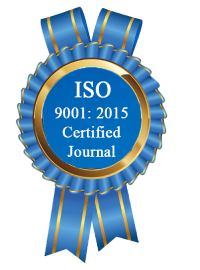| All | Since 2020 | |
| Citation | 172 | 110 |
| h-index | 7 | 5 |
| i10-index | 1 | 0 |
WJERT Citation 
Login
News & Updation
Abstract
EXTENDING THE USE OF A HIGHLY NUTRITIOUS UNDERUTILISED TARO (COLOCASIA ESCULENTA) TUBER BY DEVELOPMENT OF TUTTI FRUITY
Abdul Sabir*, Desham Kodandaram Reddy, Dr. Kavita Waghray, Vellenki Bhaskar, Srinivas Maloo
ABSTRACT
Tutti Fruity or Indian candied fruits are made from various chopped fruits and vegetables, and it is used in Cakes, Bun, Muffins, Cookies, Bread, and Custard & Ice-Cream. In this present work Taro (Colocasia esculenta) is used to prepare, because Taro is found to be highly nutritious and an underutilised tuber which also reduces the sugar level in the body.The raphides (needle like crystals) of calcium oxalate are responsible for the itching and the irritations during the handling and the consumption of Taro (Colocasia esculenta) tuber. However, the utilization options of Taro are mainly limited to direct consumption as whole boiled or pounded tuber only, thus making it an underutilized crop. In this literature an effort has made to reduce the itching caused by raphides (Needle like crystals of calcium oxalate) and to develop a new product from Taro (Colocasia esculenta) by means of 3 samples (1, 2, 3) in 3 steps (Blanching at 90?C for 3mins, Boiling at 100?C for 30mins and 60mins) and sensory evaluation conducted for all 3 samples including control sample. All 3 samples (1, 2 and 3) are subdivided into 10, 5 and 4 sub samples respectively and each subsample is assigned with a particular alphabet. Samples(1a,1b,1c,1d,1e,1f,1g,1h,1i) blanched at 90?C for 3mins with Tamarind pulp at concentrations of 5%(1a), 10%(1b), 15%(1c), 20%(1d), 25%(1e), 30%(1f),40%(1g), 50%(1h), 60%(1i) and sample(1j) blanched in water at 90?C for 3mins.Samples (2a,2b,2c,2d) boiled at 100?C for 60mins with Tamarind pulp at concentrations of 30%(2a), 40%(2b), 50%(2c), 60%(2d) and Sample(2e) boiled in Water at 100?C for 60mins. Samples (3a,3b) boiled at 100?C for 30mins with Salt solution at concentrations of 2.5%(3a), 5%(3b) and samples(3c,3d) boiled at 100?C for 60mins with Salt solution at concentrations of 2.5%(3c), 5%(3d). The sensory evaluation showed that Tutti Fruity made from Sample2d boiled at 100?C for 60mins at 60% concentration of Tamarind pulp is superior in overall acceptability at 1% significance level (p<0.01) when compared to control sample. Sample1i blanched at 90?C for 3mins at 60% concentration of Tamarind pulp and Sample 3f boiled at 100?C in water for 60mins are inferior to sample2d. Sample2d was accepted and superior to all samples in overall acceptability and maximum number of panel members i.e., 26 panel members out of 30 found that there was no itching after consumption of Sample 2d.
[Full Text Article] [Download Certificate]
